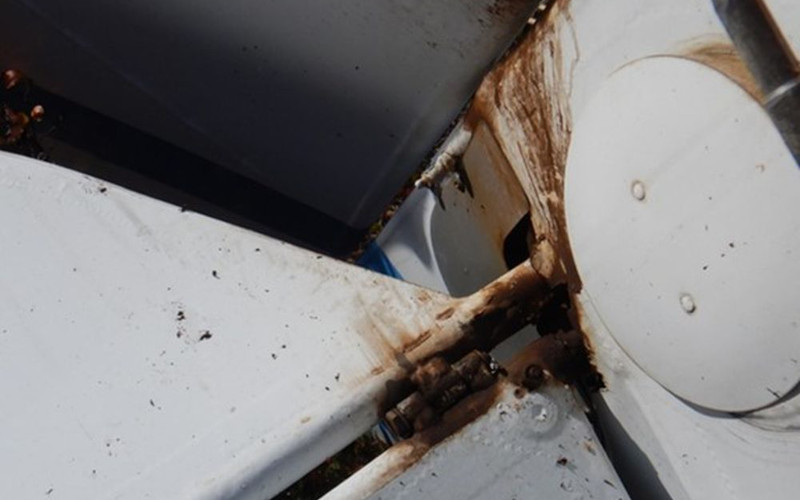May 18, 2023
TSB reports on fatal floatplane accident near Rivière Bonnard Aerodrome
Jon Robinson
The Wag-Aero Sportsman 2+2 occurrence aircraft with TSB annotations. (Photo: TSB, aircraft owner)
The Transportation Safety Board of Canada on May 4 released its investigation report (A22Q0116) into a September 2022 fatal collision with terrain following the in-flight separation of the left wing of a Wag-Aero Sportsman 2+2 (amateur-built floatplane), near the Rivière Bonnard Aerodrome in Quebec. The TSB conducted a limited-scope class 4 investigation into this occurrence.
At approximately 8:30 am on September 23,2022, the Transportation Safety Board of Canada (TSB) explains the Wag‑Aero Sportsman floatplane (registration C‑FFDA, serial number 792) took off from Lake Mylène, 12 nautical miles west of the Rivière Bonnard Aerodrome (CRB4), Quebec, to conduct a local visual flight rules flight. The flight included one pilot and one passenger.

TSB explains that, at approximately 4 nautical miles south of Lake Mylène, the floatplane’s left wing separated completely, resulting in an uncontrolled descent of the floatplane, which then struck the terrain. Both occupants of the aircraft were fatally injured and the floatplane was destroyed by the force of the impact. There was no post-impact fire. The 406 MHz emergency locator transmitter activated, and the Cospas-Sarsat search and rescue satellite system detected the signal at 0846.
The pilot held the appropriate licence and ratings to conduct the occurrence flight; and had accumulated more than 4,400 flight hours, almost all of them on the occurrence aircraft. The aircraft had been built by the occurrence pilot in 1989. According to the aircraft’s journey log, on September 4, 2022, the aircraft had accumulated 4422 flight hours since it was built. The floatplane was equipped with a 200 hp Avco Lycoming IO-360-A1B6 engine (serial number L-59367A), explains TSB, and each wing was supported by two main wing struts and two secondary wing struts.
The floatplane’s left wing was found approximately 300 feet away from the wreckage. It was heavily damaged. The aft main wing strut, explains TSB, was practically intact and was still attached, but the clevis that attached the strut to the fuselage was corroded and had a clean break. TSB continues to explain the other main strut (the forward main strut) normally found on the same wing was missing and was not found at the site. Nearly all of the attachment points, hinges and flight control linkages on the left wing showed significant signs of corrosion, according to TSB’s report.
For the purposes of its investigation, TSB sent the two main struts for the right wing (forward and aft), the aft main strut for the left wing, and all clevises attaching the struts to the fuselage to its Engineering Laboratory in Ottawa, Ontario, for examination. The examination revealed that the right strut clevises and aft left strut clevis had failed in overload, explains TSB, and the forward left strut clevis showed signs of fatigue cracking.
Read the full TSB report.
